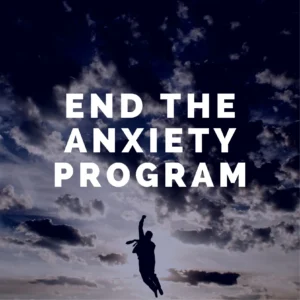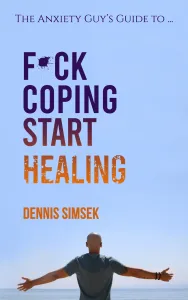Why your symptoms wont go away
I want to start by saying this gently: your symptoms are not the enemy. I speak from experience with hundreds of people and from my own practice when I say the sensations themselves are messages. They tell a story about a nervous system that has been practicing danger for a long time. That story runs deeper than the quick fixes we reach for when a panic spike hits.
It’s not the sensations, it’s the survival state
What terrifies most people is not the heartbeat or the dizziness. I don’t fear the beat, I fear what my mind says the beat could mean. That anticipation lights the whole body up. The body then matches the story the mind rehearses. That pattern runs deeper than a single thought or a single symptom.

How the nervous system learned to protect
When I look back at how people get stuck, I see a learning process. Your system learned that vigilance equals survival. If that was the climate you grew up in, calm started to feel unsafe. Stillness begins to feel foreign. Rest feels wrong. That learning is why sensations keep showing up long after the original danger is gone.
Why sensations wont go away when your system is stuck
The nervous system is efficient at what it knows. If it has been rehearsing fear for years, sensations will keep showing up because that is the program it runs. The good news is that it is learnable in the other direction too. Safety cues can be practiced until the body recognizes them as true. That change runs deeper than thinking something through.
Why checking makes the fear keep coming back
Every time I check my pulse, google a symptom, or seek reassurance, I get a tiny reward. Not because fear is pleasurable, but because my brain links action with safety. That small relief reinforces the loop. Over time the cycle keeps coming back and the system stays activated.
The loop that rewards reassurance
Anticipation triggers activation. Activation becomes sensation. Sensation becomes fear. Fear drives more anticipation. I call it a loop because that’s exactly what it feels like. Understanding that loop helps me choose a different response the next time it spins up.
When calm feels unsafe and stillness scares you
If I’m used to constant processing, to screens and noise and internal solving, peace can feel empty or even suspicious. That isn’t a flaw in me. It’s wiring. When life never pauses, the nervous system assumes there is more to prepare for. That overstimulation wears the body out and drives symptoms that are trying to get my attention.
Practical steps to teach your body what safety feels like
I don’t heal by fighting sensations. I heal by changing the environment the sensations come from. That means I practice safety cues again and again, gently. It is not urgency or force. It is repeating small experiences of safety until the system begins to accept them as real. Each little practice runs deeper than a one-off reassurance.
A simple breathing reset
Place one hand on your heart and one on your stomach. Breathe in for four seconds. Hold for two. Exhale for six. Do this a few times. These are safety signals. I use them when my mind is racing and when my chest tightens. They remind my body it is safe now, not after a test or after someone tells me it’s okay.
If your anxiety refuses to go away, try trust cues
When symptoms refuse to go away, I ask a different question: What would I do right now if I trusted my body? Maybe I would stand up. Maybe I would go outside. Maybe I would stop Googling. Trust is not a finish line; it is a habit to practice. Small choices send new data to the nervous system and, over time, rewrite what safety feels like.
You are not fragile, you are adaptable
Your nervous system is doing what it was built to do: protect you. That doesn’t mean it’s broken. It means it learned a way that once helped, and now it needs new learning. I remind myself and others that symptoms are messengers, not markers of weakness. Healing is steady work, breath by breath, moment by moment.
Where to go from here
If this episode landed with you, the next step is practice, not proof. Practice the breath, the trust cues, the small exposures to calm. Slow down your checking, notice when reassurance gives you that tiny hit, and choose a different action. Remember that healing runs deeper than a single technique. It is a collection of safe experiences stacked one on top of the other.
If you found this helpful, please share it with someone who needs it. If you want guided daily steps, I mention a step-by-step program in the episode and the special offer using code TREAT30 is available at the place I mentioned in the show notes. I’ll see you next time. Stay gentle with yourself. You are returning to yourself one gentle moment at a time.




